Hubble Ultra Deep Field 2014

stsci_2014-27a June 14th, 2014
Credit: NASA, ESA, H. Teplitz and M. Raf
Astronomers using NASA's Hubble Space Telescope have assembled a comprehensive picture of the evolving universe ? among the most colorful deep space images ever captured by the 24-year-old telescope. Researchers say the image, from a new study called the Ultraviolet Coverage of the Hubble Ultra Deep Field, provides the missing link in star formation. The Hubble Ultra Deep Field 2014 image is a composite of separate exposures taken in 2002 to 2012 with Hubble's Advanced Camera for Surveys and Wide Field Camera 3. Astronomers previously studied the Hubble Ultra Deep Field (HUDF) in visible and near-infrared light in a series of images captured from 2003 to 2009. The HUDF shows a small section of space in the southern-hemisphere constellation Fornax. Now, using ultraviolet light, astronomers have combined the full range of colors available to Hubble, stretching all the way from ultraviolet to near-infrared light. The resulting image - made from 841 orbits of telescope viewing time - contains approximately 10,000 galaxies, extending back in time to within a few hundred million years of the big bang. Prior to the Ultraviolet Coverage of the Hubble Ultra Deep Field study of the universe, astronomers were in a curious position. Missions such as NASA's Galaxy Evolution Explorer (GALEX) observatory, which operated from 2003 to 2013, provided significant knowledge of star formation in nearby galaxies. Using Hubble's near-infrared capability, researchers also studied star birth in the most distant galaxies, which appear to us in their most primitive stages due to the significant amount of time required for the light of distant stars to travel into a visible range. But for the period in between, when most of the stars in the universe were born - a distance extending from about 5 billion to 10 billion light-years - they did not have enough data. "The lack of information from ultraviolet light made studying galaxies in the HUDF like trying to understand the history of families wi
Provider: Space Telescope Science Institute
Image Source: https://hubblesite.org/contents/news-releases/2014/news-2014-27
Curator: STScI, Baltimore, MD, USA
Image Use Policy: http://hubblesite.org/copyright/
 Color Mapping
Color Mapping
| Telescope | Spectral Band | Wavelength | |
|---|---|---|---|

|
Hubble (WFC3) | Infrared (Y) | 105.0 nm |

|
Hubble (WFC3) | Infrared (J) | 125.0 nm |

|
Hubble (WFC3) | Infrared (JH) | 140.0 nm |

|
Hubble (WFC3) | Infrared (U) | 150.0 nm |

|
Hubble (ACS) | Infrared (H) | 160.0 nm |

|
Hubble (WFC3) | Ultraviolet (U) | 225.0 nm |

|
Hubble (WFC3) | Ultraviolet (U) | 275.0 nm |

|
Hubble (WFC3) | Ultraviolet (U) | 336.0 nm |

|
Hubble (ACS) | Optical (B) | 435.0 nm |

|
Hubble (ACS) | Optical (V) | 606.0 nm |

|
Hubble (ACS) | Optical (I) | 775.0 nm |

|
Hubble (ACS) | Optical (I) | 814.0 nm |

|
Hubble (ACS) | Optical (z) | 850.0 nm |
| The metadata for DatasetID and Temporal Start Time are the first of each new filter. Exposure Date:July 2002 - September 2012 | |||















- ID
- 2014-27a
- Subject Category
- E.6.1.1
- Subject Name
- Hubble Ultra Deep Field
- Credits
- NASA, ESA, H. Teplitz and M. Raf
- Release Date
- 2014-06-14T00:00:00+00:00
- Lightyears
- Redshift
- Reference Url
- https://hubblesite.org/contents/news-releases/2014/news-2014-27
- Type
- Observation
- Image Quality
- Good
- Distance Notes
- -
- Facility
- Hubble, Hubble, Hubble, Hubble, Hubble, Hubble, Hubble, Hubble, Hubble, Hubble, Hubble, Hubble, Hubble
- Instrument
- WFC3, WFC3, WFC3, WFC3, ACS, WFC3, WFC3, WFC3, ACS, ACS, ACS, ACS, ACS
- Color Assignment
- Green, Red, Red, Red, Blue, Blue, Blue, Blue, Blue, Green, Green, Green
- Band
- Infrared, Infrared, Infrared, Infrared, Infrared, Ultraviolet, Ultraviolet, Ultraviolet, Optical, Optical, Optical, Optical, Optical
- Bandpass
- Y, J, JH, U, H, U, U, U, B, V, I, I, z
- Central Wavelength
- 105, 125, 140, 150, 160, 225, 275, 336, 435, 606, 775, 814, 850
- Start Time
- 2009-08-26T00:00:00, 2009-08-28T00:00:00, 2009-10-03T00:00:00, 2005-01-08T00:00:00, 2009-09-01T00:00:00, 2009-09-07T00:00:00, 2009-09-07T00:00:00, 2009-09-07T00:00:00, 2002-07-29T00:00:00, 2002-07-31T00:00:00, 2002-06-13T00:00:00, 2009-09-07T00:00:00, 2002-06-13T00:00:00
- Integration Time
- Dataset ID
- Notes
- T
- Coordinate Frame
- ICRS
- Equinox
- 2000.0
- Reference Value
- 53.12275100000, -27.80508900000
- Reference Dimension
- 2300.00, 2100.00
- Reference Pixel
- 1413.31302972852, 3391.44349265369
- Scale
- -0.00001669203, 0.00001669203
- Rotation
- 51.81317411173
- Coordinate System Projection:
- TAN
- Quality
- Full
- FITS Header
- Notes
- World Coordinate System resolved using PinpointWCS 0.9.2 revision 218+ by the Chandra X-ray Center
- Creator (Curator)
- STScI
- URL
- http://hubblesite.org
- Name
- Space Telescope Science Institute Office of Public Outreach
- outreach@stsci.edu
- Telephone
- 410-338-4444
- Address
- 3700 San Martin Drive
- City
- Baltimore
- State/Province
- MD
- Postal Code
- 21218
- Country
- USA
- Rights
- http://hubblesite.org/copyright/
- Publisher
- STScI
- Publisher ID
- stsci
- Resource ID
- STSCI-H-p1427a-f-2300x2100.tif
- Resource URL
- https://mast.stsci.edu/api/latest/Download/file?uri=mast:OPO/product/STSCI-H-p1427a-f-2300x2100.tif
- Related Resources
- http://hubblesite.org/newscenter/archive/releases/2014/27
- Metadata Date
- 2022-07-06T00:00:00
- Metadata Version
- 1.2
Detailed color mapping information coming soon...






